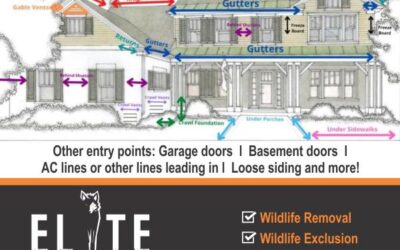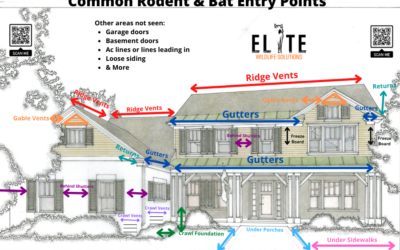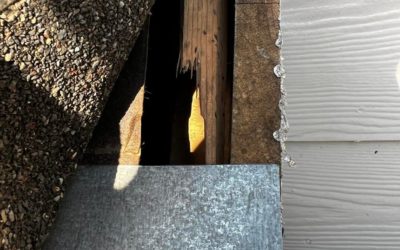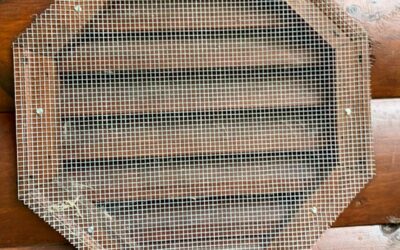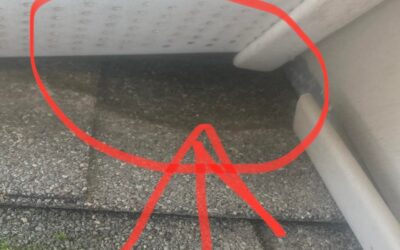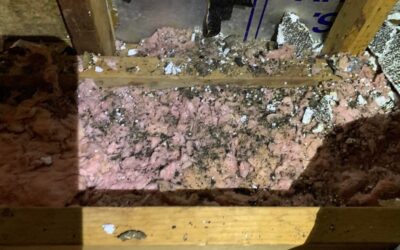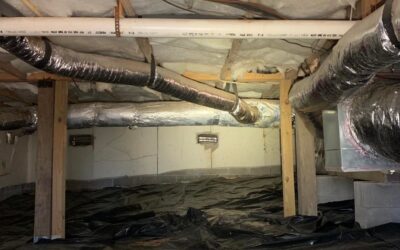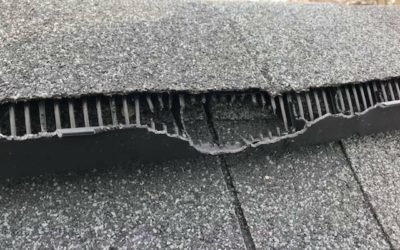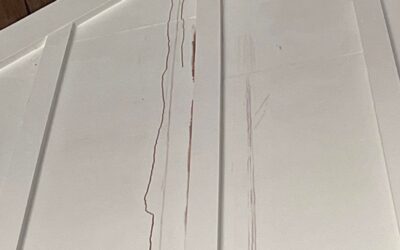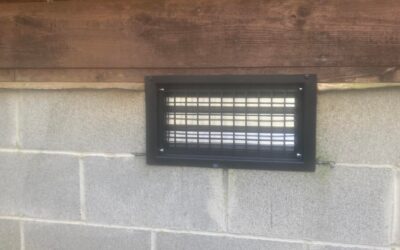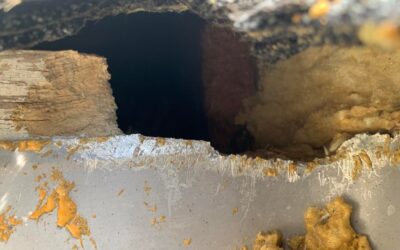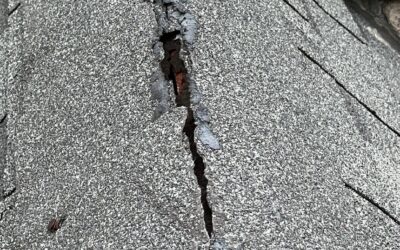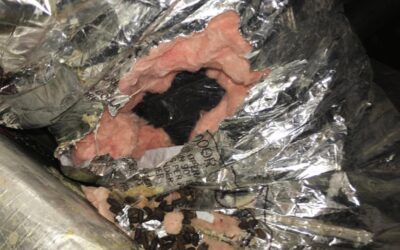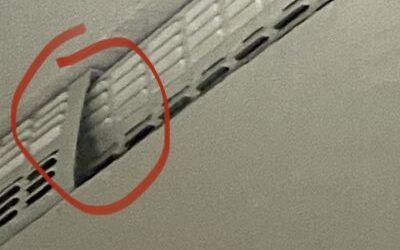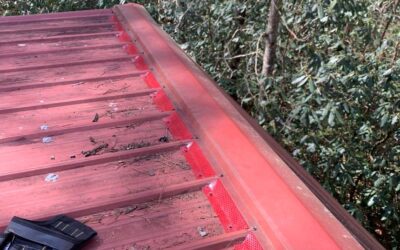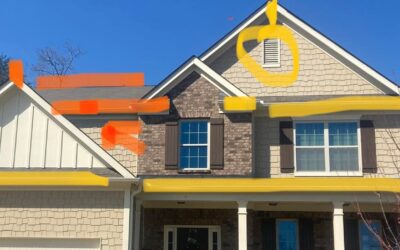Blog
Pre-Winter Home Sealing: Preventing Wildlife Entry Before Cold Weather Hits Northern Georgia
As November temperatures drop throughout...
How to Choose the Right Wildlife Removal Company for Your Nuisance Wildlife Issue
When you have unwanted wildlife on your...
Why You Should Never Trust Social Media for Rodent or Wildlife Advice
When it comes to protecting your home from...
Why Sealing Gable Vents from the Inside Is a Serious Mistake
When it comes to wildlife exclusion, especially...
Why “Trap-Only” Wildlife Removal Costs You More in the Long Run
If you’re dealing with nuisance wildlife in your...
How Rodents Enter Through Shingle Ridge Vents and How We Stop Them
Many homeowners—and even some roofers—don’t...
Why Proper Utility Line Sealing Matters — And Why Foam Isn’t Enough
When it comes to rodent and wildlife intrusion,...
The Overlooked Risk: Crawl Space Vents and Why They Matter in Wildlife Exclusion
When it comes to rodent and wildlife intrusion,...
Foundation Issues in Crawl Spaces: What Most Companies Miss
Crawl space foundations are one of the most...
Why Sealing Rooflines Behind Gutter Lines the Right Way Matters
When protecting your home from rodents, one of...
Metal Roof Rodent Entry: Why It Happens and How to Seal It Right
Metal roofs may not offer the protection you...
Why the Cheapest Wildlife Removal Can Cost You More in the Long Run
When wild animals invade your home, your first...
Is Your Roof Letting Rodents In? Why Shingle Ridge Vents Are North Georgia’s #1 Hidden Entry Point (And How We Fix It for Good)
Did you know bats can get into gaps as small as...
What Attracts Rodents to Your North Georgia Home? Common Mistakes That Invite Mice and Rats
If you've ever dealt with a rodent problem, you...
6 Reasons Squirrels Have Taken Residence in Your Home
6 Reasons Squirrels Have Taken Residence in Your...
Health Hazards of Having Bats in the Attic
Health Hazards of Having Bats In The Attic...
Spot Sealing vs. Full Home Exclusion: What’s Best for Your Northern Georgia Home?
Spot Sealing vs. Full Home Exclusion: What's...
Dealing with a Rat Infestation – Rat Control in Georgia
Rat infestations can subtly creep into your home...
Why we don’t do spot seals and trapping only?
To answer one of many questions we get on...
Rodent Entry Points
Rodent Entry Points There are many ways that...
Sealing Corners and Drip Edges From Rodents
Want to know more about Sealing Corners and Drip...
Gables
Gables - Gables can come in a variety of shapes...
Attic Returns
Returns Returns can be a few different areas....
Attic Cleanouts
Attic Clean up, disinfectant, deodorant, and...
Areas that can also get contaminated
Basements are a big area where we find mice and...
Shingle Ridge Vents
Shingle ridge vents One of the most overlooked...
True Story (Flying Squirrel Edition)
True Story (Flying Squirrel Edition): This...
Crawl Vent Replacement
This can be a prime entry for Mice Rats Snakes...
Rodent Inspections For Real Estate
Wildlife and rodent inspection for new home...
Why Cheaper Isn’t Always Best
In our line of work, you hear of companies who...
Mice In Georgia
Mice In Georgia Mice The house mouse is...
Soffit Strip Vents
Strip vents are an area most wildlife companies...
Metal Roofing
Wildlife Exclusion on Metal Roofing With metal...
Rodent Prevention
Have you heard of Rodent Prevention or Wildlife...
Frequently Asked Questions
I saw on Facebook, Google & YouTube that I just need to seal the area the pests are coming in at. Why are you selling the total home seal-up?
With some builders, you have numerous gaps and with rodents, they can get into spots we don’t realize they can; without a trained eye for this, you may not know until it’s too late and damages happen. Spot sealing only covers up to 3 spots with no warranty – with this said, you could have far more than this. The rodents – once locked out or sealed out – understand this as home and will search until they find one of the other gaps. If the hole is not big enough, they will chew and cause damages or get into an area unheard and wreak havoc by chewing wires, duct work, and much more. Spot seals are a short-term solution at best; for a long-term solution, you have to hit current and future entry areas to eliminate them coming back.
How much damage can one rodent cause if I just used the cheapest solution?
Over time, once they gain access, they may get into an area of the home where you can’t hear them moving around or scratching. Here are a few examples:
A client 4 years ago had duct work damages. He had no idea rodents had been back until the AC guy came in to do a routine service. Squirrels had chewed through his duct work causing major damage to the tune of $10,575. They also contaminated all the ducts to every other room in the home.
Also, 20 – 30% of home fires have been caused by rodents chewing wiring. Flyers cause urine stains that can run down walls, cabinets, and onto drywall and ceilings.
This is not something I would try to bandaid fix!
When "sealing" the ridge vents or metal ridge caps, will my attic be able to breathe still?
Yes, both our metal and shingle sealing solutions are designed to effectively prevent rodents and other pests from entering your home. Each product features small perforations that allow for proper airflow, ensuring that your home’s ventilation system remains fully functional and uncompromised.
When sealing the ridge vents, can they cause leaks due to using screws to hold the material down?
No, the screws used are the same type but longer than standard metal roofing screws. Each screw includes a rubber washer backed by a metal washer. As the screw is tightened, the rubber washer compresses and expands to seal the hole, while the metal washer shields the rubber from weather exposure and degradation. Additionally, we apply sealant to every screw to ensure a watertight seal and enhance overall durability.

